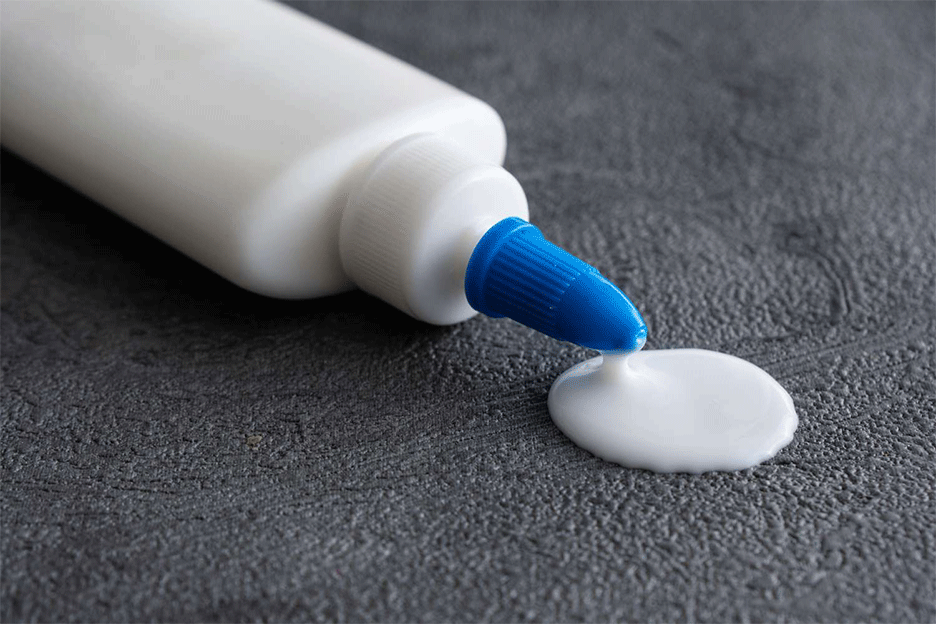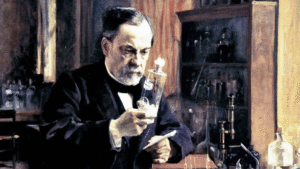Glue is a sticky material (usually a liquid) that can stick two or more things together. The earliest form of glue was made from plants and then boiling animal parts, and today it is made from oil-based chemicals and synthetics. Glue is one of those inventions that we take for granted and maybe even think it is relatively new. However, the history of it goes back to the earliest man. The first known adhesives or glue were from the bark of birch trees, which were used totally unprocessed by the earliest humans. By 5,200 BC more advanced processes were introduced in continental Europe and the Middle East, involving mixtures that used natural solid polymer pitch. The creation of such tar-based glue involved the precise heating of the birch bark. Although more common animal-based glue was first introduced in Ancient Egypt some four thousand years ago. This is the earliest known confirmation of the use of glue that was made by prolonged boiling of animal hides, hooves, cartilage and bones. Some very strong glues were first made from fish bones, rubber or milk. Glue was a substance for the rich as it was very expensive and rare but examples of it have been found in furniture that was preserved in various tombs of Pharaohs, including the casket of Tutankhamun.
While glues became very popular in Ancient Greece and Rome where they were used in countless manners, they went out of fashion in Europe immediately after fall of Roman Empire. In contrast China, Africa and Asia maintained their usage until around 900 – 1,000 AD, mostly as a tool for furniture makers and preservatives for images. The first resurgence of glue in modern Europe happened in 16th century, brought by trading and scientific advancements enabled woodworkers to start experimenting with new designs that were possible only with the use of animal glues. Their efforts were applied to the creation of many types of wooden instruments like guitars and violins, but also the tar-based variants created sealants for wooden planks on boats and ships making them more seaworthy. The long journey of glue, so far, ends with a man called Harry Coover Jr who released his first version of Super Glue in 1958. Super glue, scientifically referred to as cyanoacrylate, was not created on purpose. In 1942, Dr. Harry Coover was trying to create a clear plastic for gunsights to be used in the war. During his testing and experimenting, he accidentally created super glue. Though you’d assume he’d be happy about this serendipitous moment, he was not. He was annoyed by how relentlessly sticky this new substance was. He didn’t realize it could be a very helpful phenomenon until years later, when accidentally remaking it during the invention of something else, he realised its potential.
Today, synthetic glues, rubber glues and small amounts of plant and animal glues are used all around us. The phenomenon of glue which holds two things together reminds me of the power of God. There is a beautiful verse in the bible that speaks of the assurance of salvation in Christ Jesus. In the gospel of John chapter 10 verse 28 the Lord Jesus himself said ‘And I give unto them eternal life; and they shall never perish, neither shall any man pluck them out of my hand.’ Those who trust Christ as Saviour are as safe as if they have been super glued to the hand of God. No one can take them away, even they themselves cannot fall away. In the very first chapter of the book, John says ‘But as many as received him, to them gave he power to become the sons of God, even to them that believe on his name:’ Christ gives power to all those who trust in Him, to stay in Him. He gives us the assurance of our salvation. After we have trusted Christ even though we still make mistakes, Christ assures us that we are stuck in him. As if we had been glued into him, grafted into his family.
P. Pilgrim pilgrimway101@yahoo.com




